As the new year began, I wanted to challenge myself by building on my diving skillset. I headed to North Carolina to complete my scientific dive training in Morehead, a coastal town that is home to the marine science campus of Duke University.
There I worked with Janelle Flemming, a scientific diver, who among her other accomplishments, teaches scientific diving and runs a foundation that provides diving and marine science training for high school students to get an early start in the field through the non-profit Merrow Foundation.

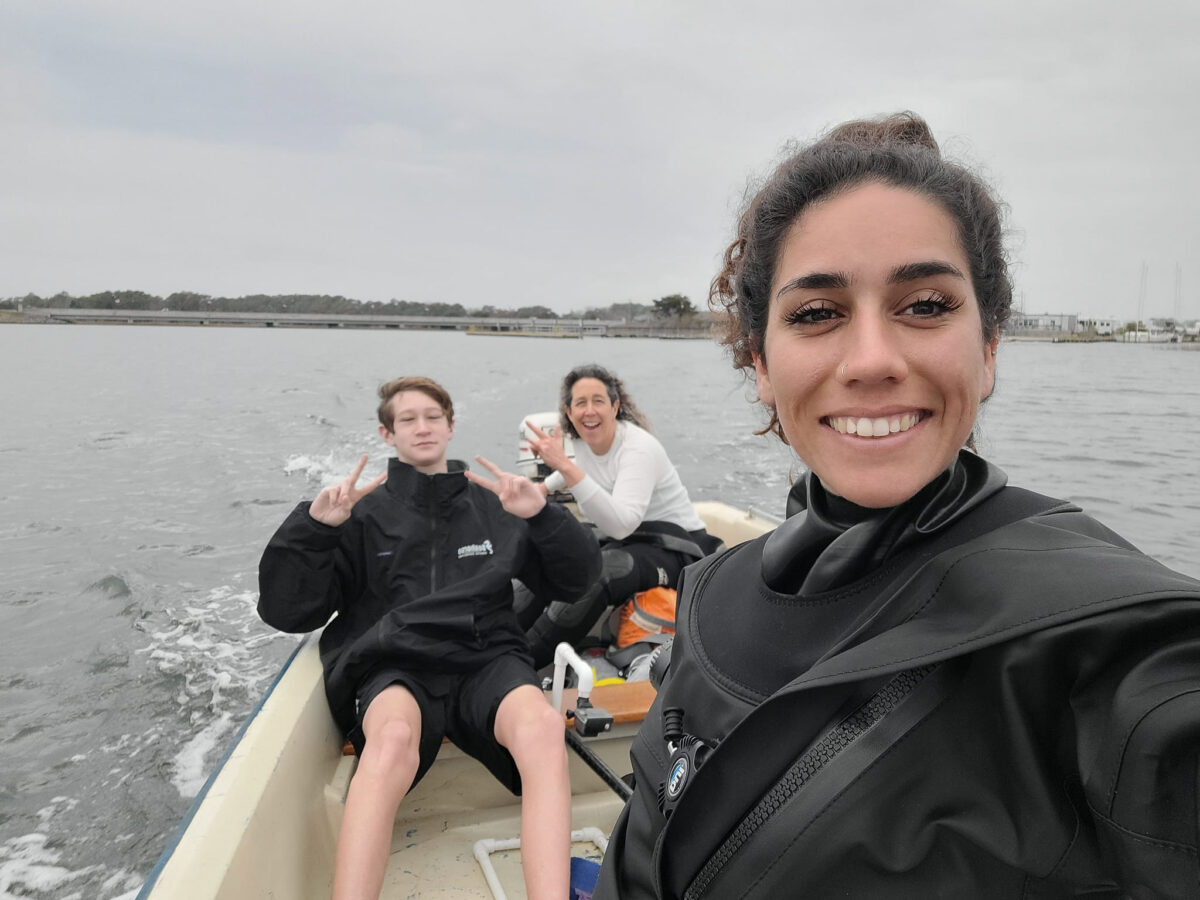
With Janelle, I worked on building my scientific diving skills, starting off with our swim test in the pool, then a trial dive in North Carolina aquariums. I got to do a behind the seas tour of the aquarium exhibits followed by a dive in their shark tank. I got to take some souvenirs with me in the form of sand tiger and sandbar shark teeth.

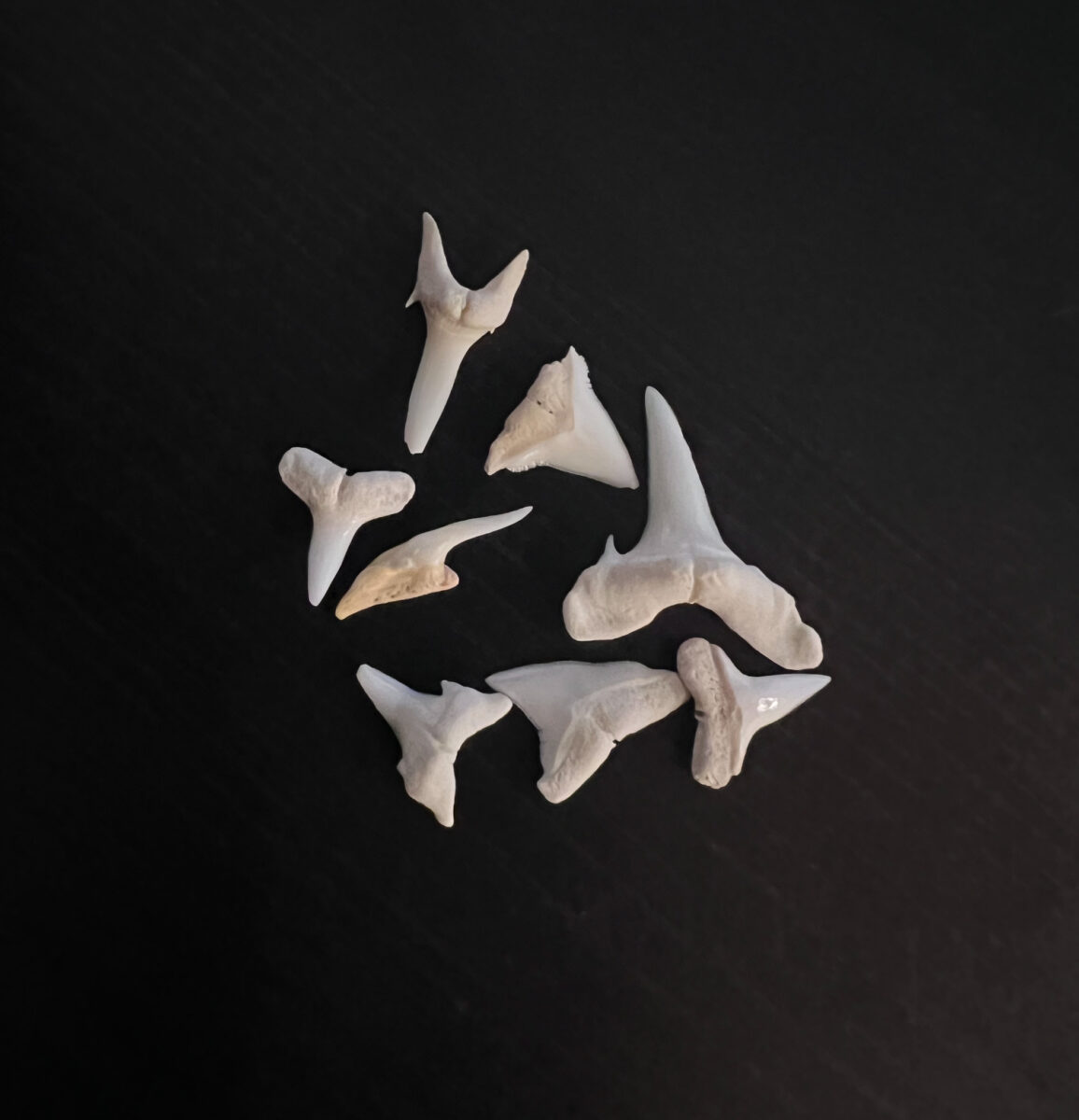
We then spent the next few days in the field, where I got to use my DUI drysuit for the first time, to dive in the cold waters of coastal North Carolina. We headed offshore to take photos of sand tiger sharks for the “Spot a Shark” program. This is a citizen science program where divers will take side profile shots of sand tigers and upload them to an online database where an algorithm identifies individual tiger sharks based on their spot patterns. This helps determine population numbers and population dynamics.
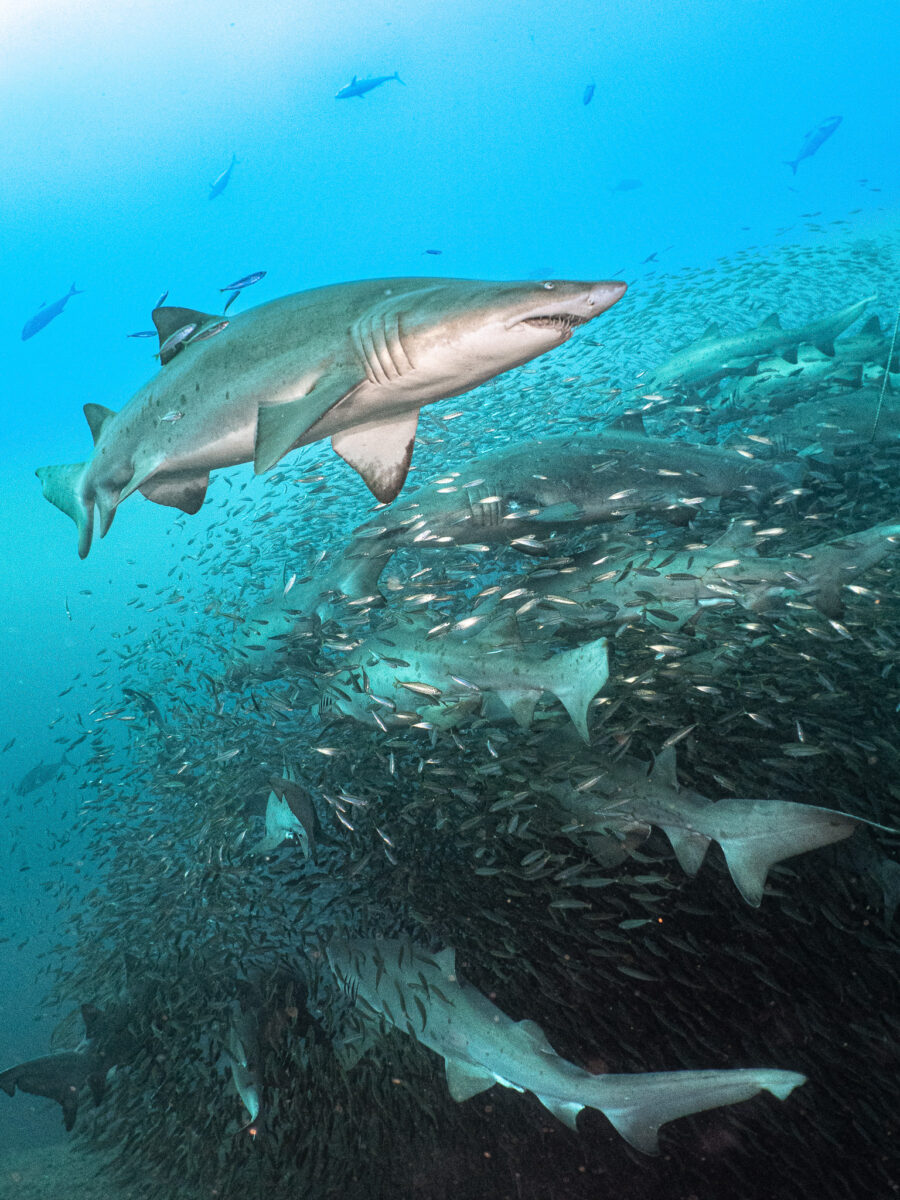

We continued the following days of scientific dive training with navigation skills and transects. During this time, I got to do my DAN DFO instructor training with the students from the Aquaneer program. I was super impressed by their knowledge and engagement in marine sciences. Most of them scored higher than me on their first aid tests as well because they’re such a clever group of students. (Either that or I’m out of practice with testing- hahaha!)

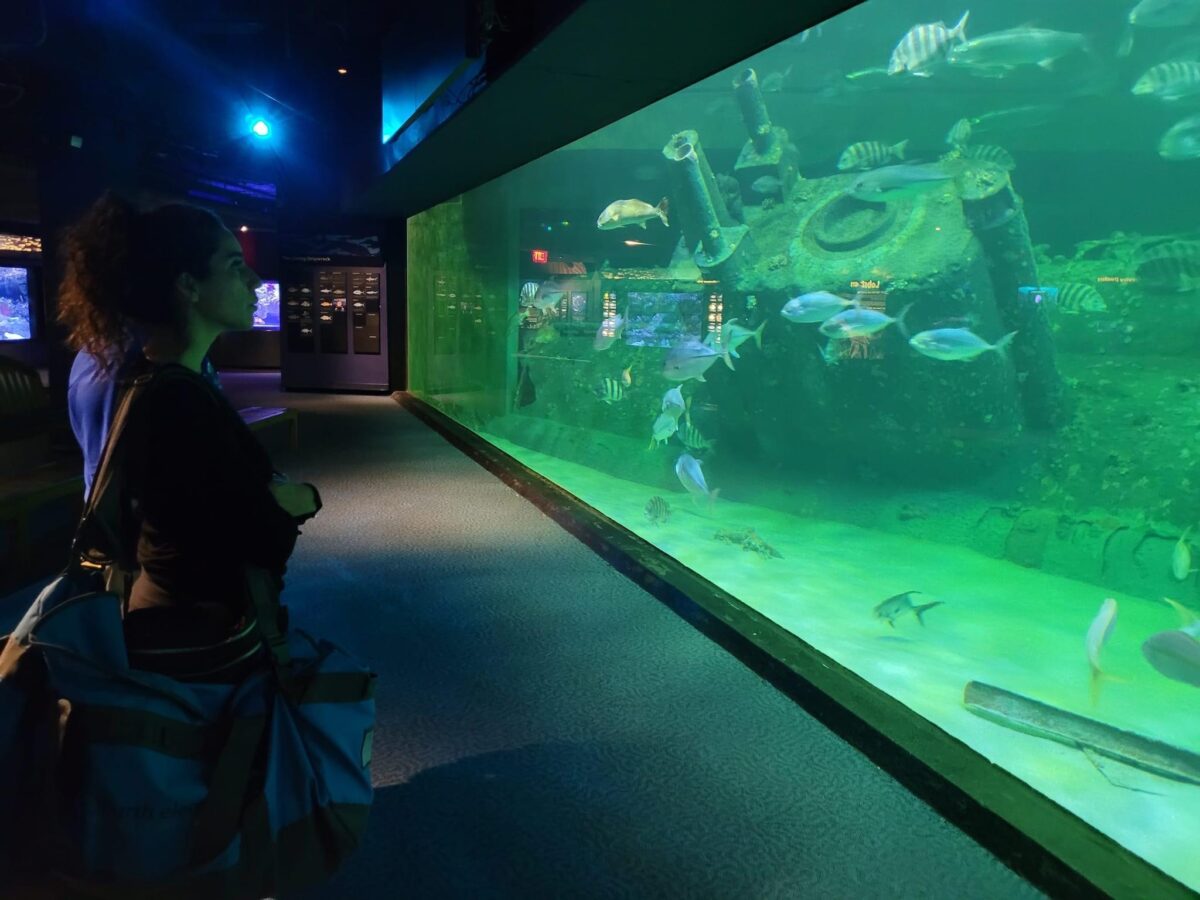
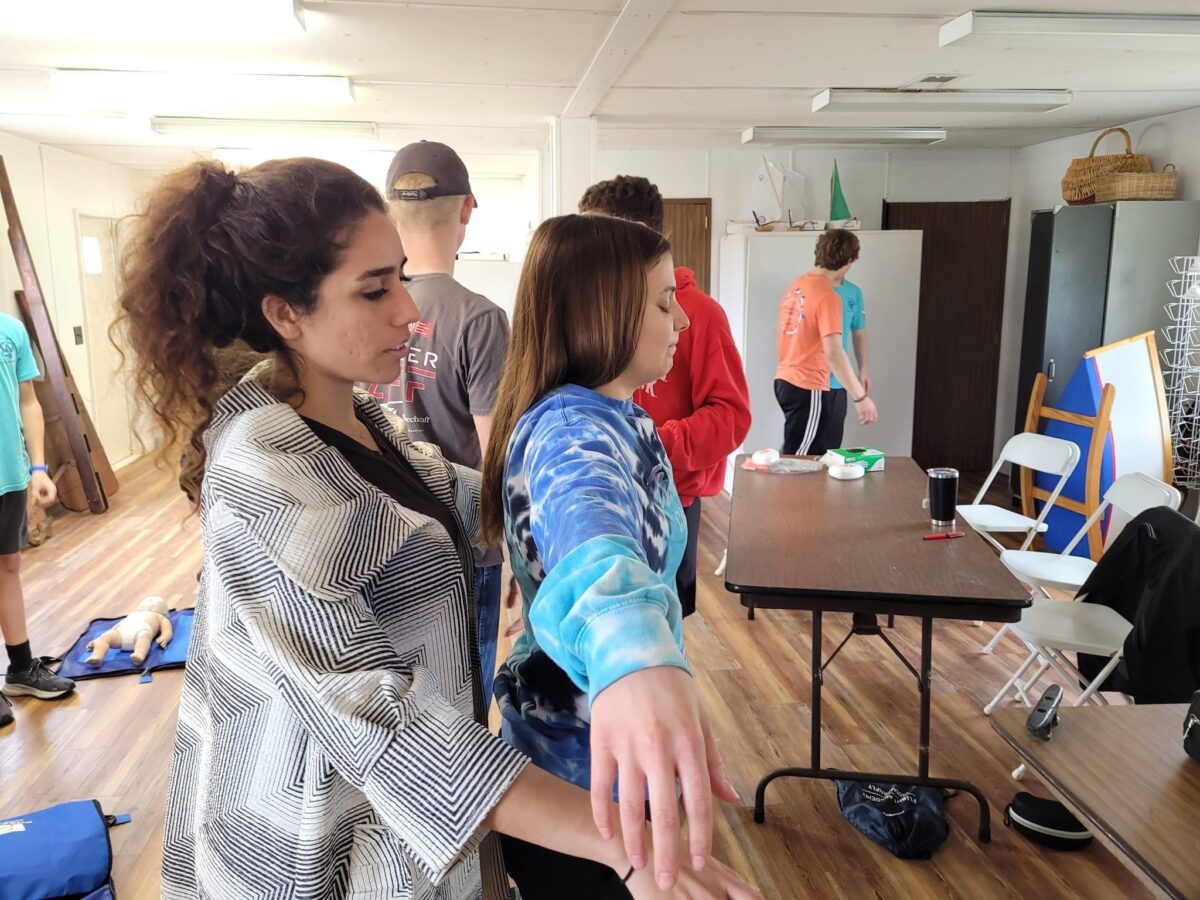
After leaving North Carolina, I headed to Florida to begin my TDI AP Inspiration CCR Rebreather Air Diluent course with Jennifer Mayfield. She is an accomplished rebreather instructor and has been diving with the Inspiration for more than 20 years. She took me under her wing to teach me.
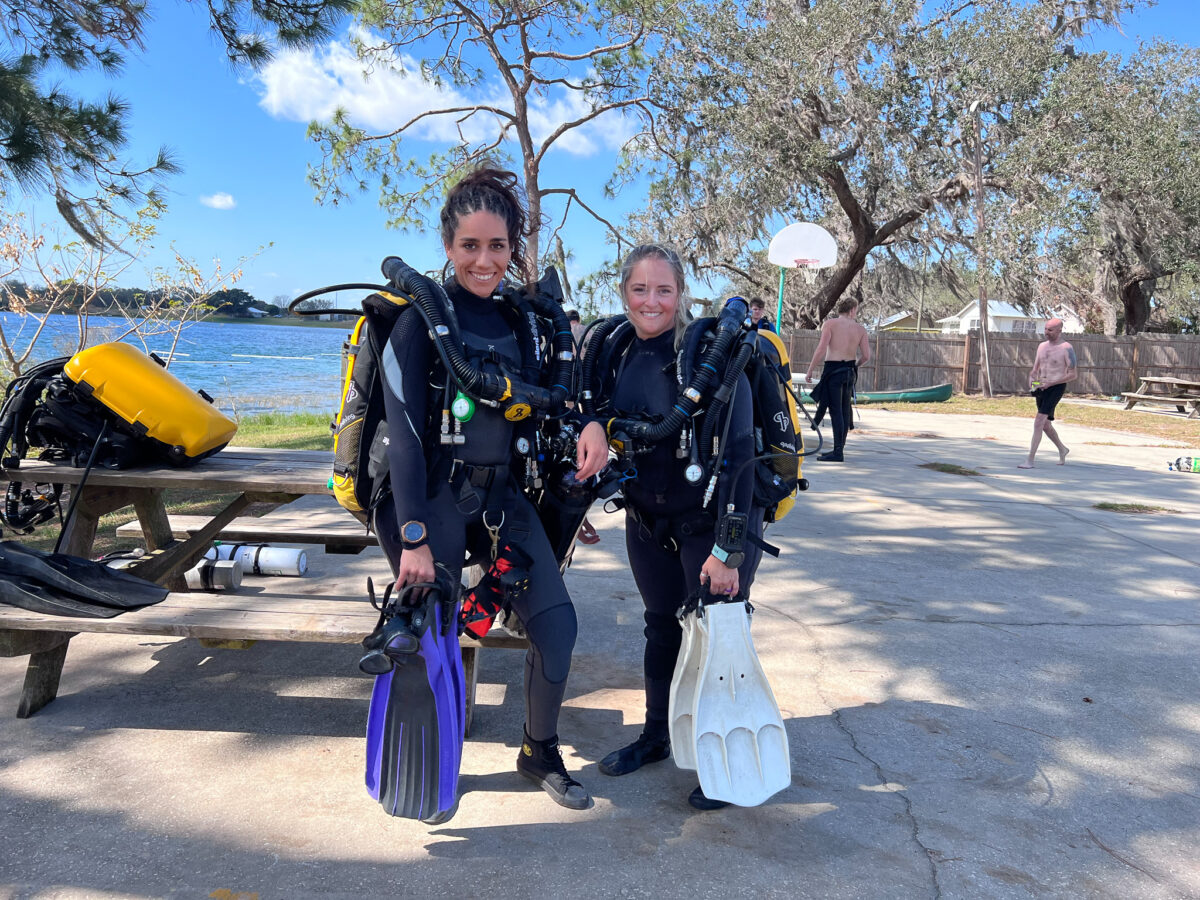
We spent our first day of training in the pool to practice all the skills one time in the pool before heading to open water. We had gone over the theory of the skills and the assembly of the rebreather unit, which is a rigorous process with multiple checks, to ensure that all aspects of the unit are functioning correctly before donning the unit. After these, we then headed into the pool and set up on the rebreather configuration for the first time. We practiced one skill at a time from Jennifer’s famous flip book of “cards of misfortune”, accounting for all the possible challenging scenarios I may have to encounter with a rebreather unit underwater. Despite only tackling one skill at a time I had a hard time with all of them. I felt so deeply out of my element. Everything felt different, with the buoyancy being the strangest part of it. I couldn’t control my buoyancy at all with my breath like on open circuit and any slight change of depth or addition or removal of air from the unit would send me to the surface or sinking to the bottom of the pool. I came up from our pool session, completely discombobulated and assuring Jennifer, “I swear I actually know how to dive”. I felt completely brand new– my experience as a diver on open circuit in no way helped me adjust to the feeling of a rebreather unit. It was so different.
The next day, we headed out to open water for the first time to practice the skills in deeper water. On the first dive, we focused on just doing a regular dive — no skills– so that I could get used to the feel of diving with the unit. I practiced maintaining my loop volume and navigating around obstacles instead of over them so that I could maintain my buoyancy. The Florida reefs were beautiful and we saw sharks and loads of fish during our dive. Seeing how the fish responded differently to me when I’m on a rebreather was so mesmerizing. They would swim by closely with no inhibitions.
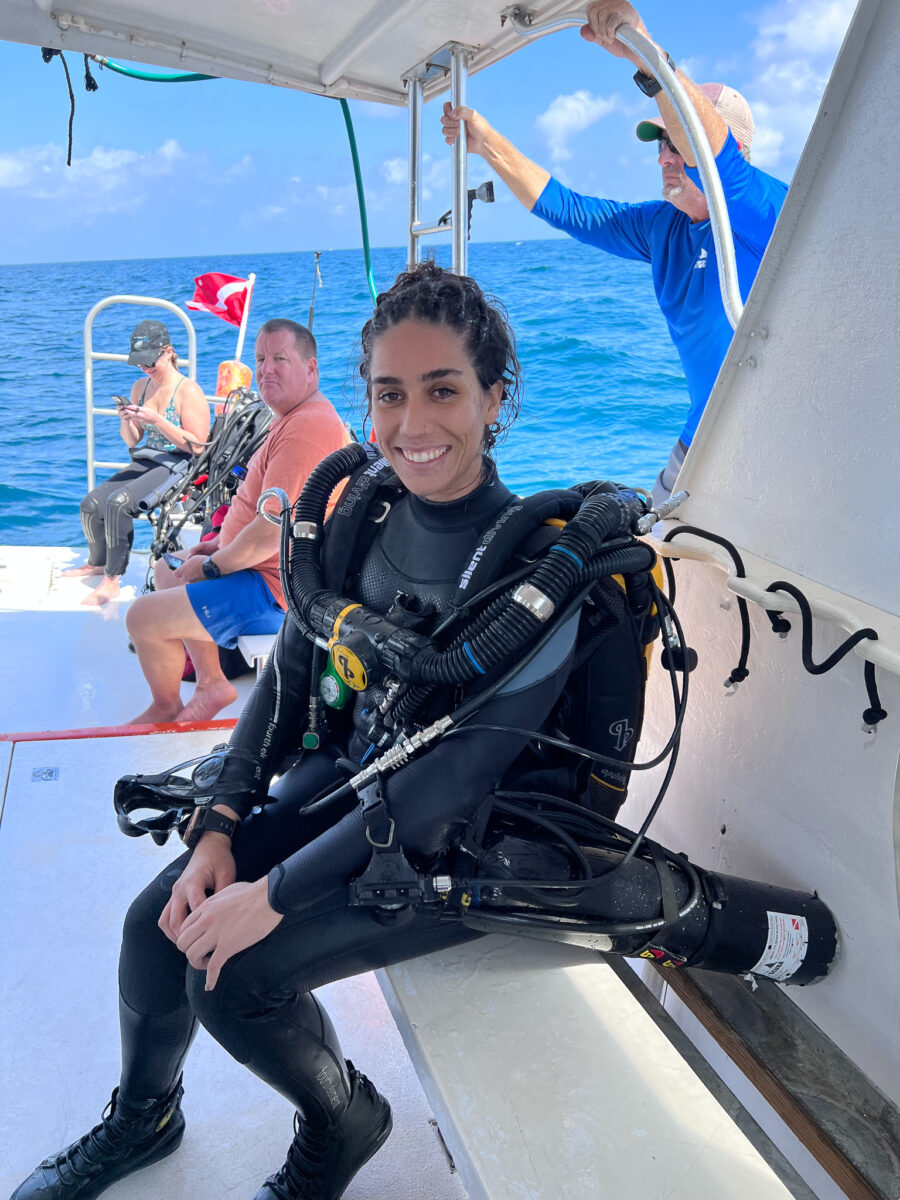

The second dive was where the skills began. Jennifer pulled out the cards of misfortune and had me practice a variety of scenarios, including manually flying my unit, practicing diluent flushes and practicing responding to a variety of scenarios underwater. I struggled with every. single. skill. Royally. My buoyancy would go to the pits every time I tried a skill and I’d be fighting my way back down as I’m frantically trying to monitor my PPO2 with my changing buoyancy. Jennifer was endlessly patient and would give me time to practice. I fought my way back down one more time and frantically grabbed a piece of rock to hold myself in place, catching my breath and trying to get myself to calm down. I sat there panic breathing and holding that rock like it was my lifeline. Jennifer gave me a moment to collect myself. I was sitting there thinking, what am I doing, this is so hard, maybe it’s not meant for me. I knew rebreather diving would be hard and that I would have to relearn buoyancy. But I didn’t realize it would be this hard and that I would forget how to breathe, how to swim, how to exist, how to think properly. I looked like I didn’t know how to dive at all.
Right at that moment a Hammerhead swam by to check us out. As I watched it swim off, I squeeked into my rebreather with excitement and Jennifer and I high-fived excitedly underwater. It was such a special moment. I took the hammerhead swim-by at that moment as my sign from the ocean that I can do this.
Over the next few days, the more I practiced the rebreather skills, the more they felt easier and would come more naturally. I began to get used to the different style of buoyancy management with the rebreather unit and I loved seeing how the wildlife would come closer when I wasn’t producing bubbles. For me, my fascination with rebreather comes from my interest in filmmaking. I wanted to learn how to use this tool so I could open up more doors for myself in the world of underwater storytelling.
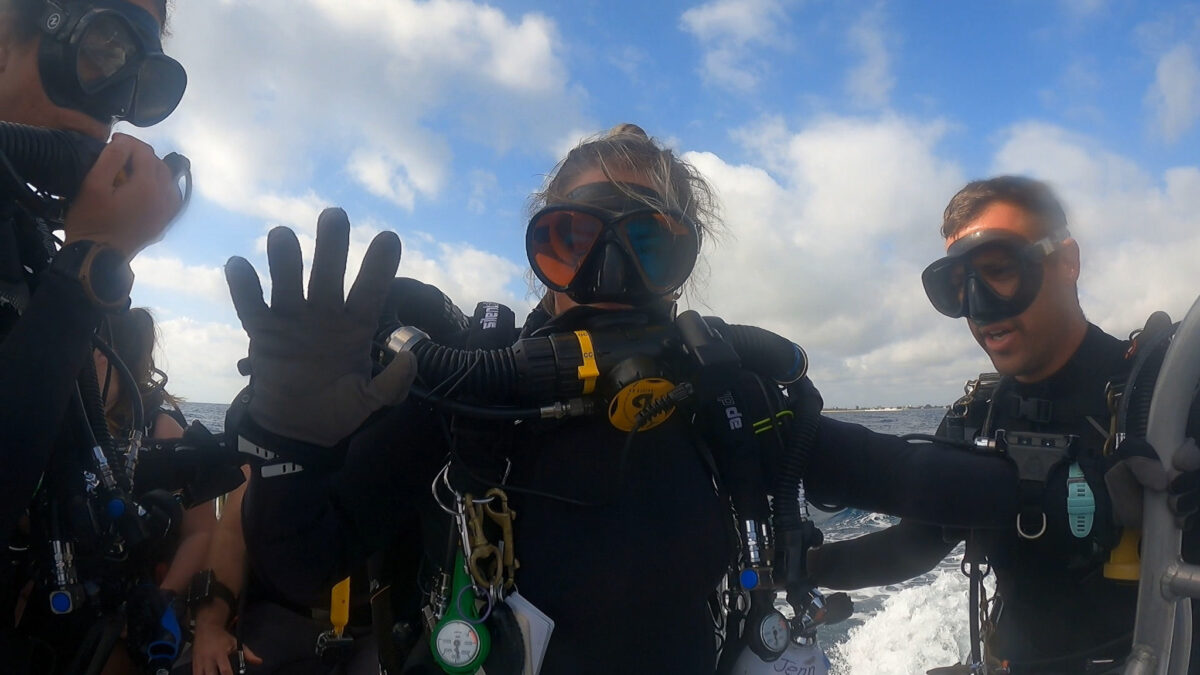
On one of the days, we were diving in a lake and I heard this loud rumble. I looked at Jennifer and asked her if the sound I was hearing was a boat. She shook her head and laughed. When we came back up to the surface, she explained to me that the sound I was hearing was a group of open circuit divers. Wow. That’s how loud we are??? Yes, she explained, and fish behaviour changes as soon as the sound and presence of bubbles enters the surrounding water.
By the end, I was starting to feel comfortable. I could maintain my buoyancy and respond to all the scenarios necessary for my course. Jennifer would check in with me if I felt confident with all the skills. Any skills I didn’t feel confident with we would practice again. I loved that I could talk into the rebreather unit and hear myself. I would talk to myself endlessly underwater, and on our safety stop, Jennifer and I would sing the tune of songs to each other and try to guess the songs each other was singing. I loved learning from Jennifer as she held me to a high standard and expected the best of me. She loved rebreather diving and she shared that joy with me. The course flew by too quickly, leaving me itching to be able to hop into the ocean with a rebreather unit again soon.
A huge thank you to Jennifer Mayfield and Silent Diving for this incredible opportunity to train on the AP Inspiration. Thank you to Stuart Scuba for graciously having me on their dive boats for my training. Thank you to Janelle Flemming for working with me on my scientific diving as well as the Merrow Foundation Aquaneers for being so inspiring. Thank you to Patty Seery for coordinating so kindly my experience in North Carolina. Also a huge thank you to Rolex, Our World-Underwater Scholarship Society, Divers Alert Network, and my product sponsors Aqua Lung, Diving Unlimited International (DUI), Fourth Element, Halycon, Light and Motion, Nauticam, and Reef Photo and Video for making these opportunities possible.